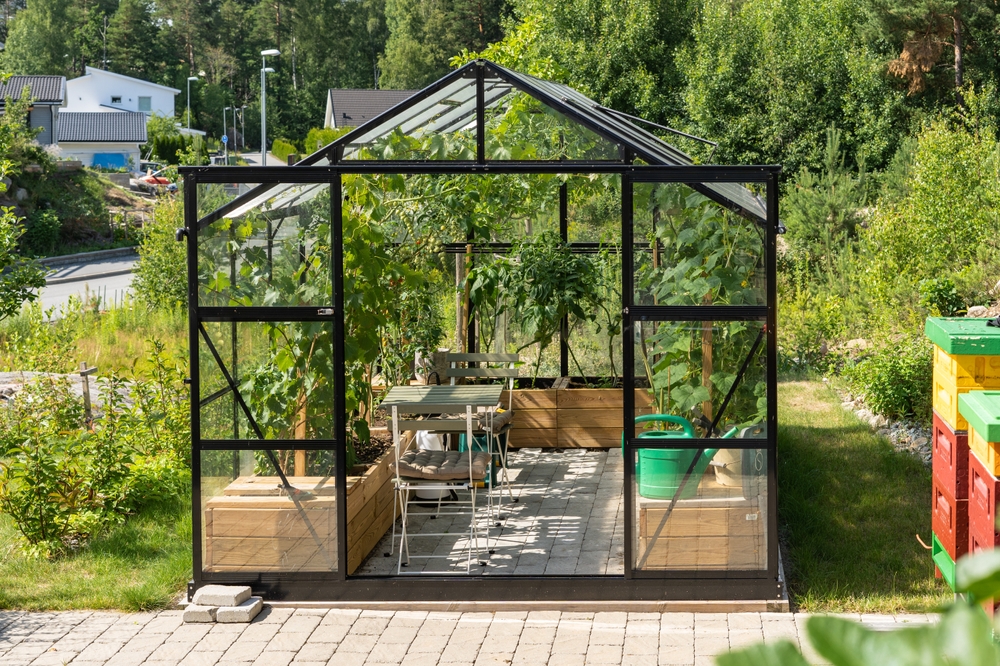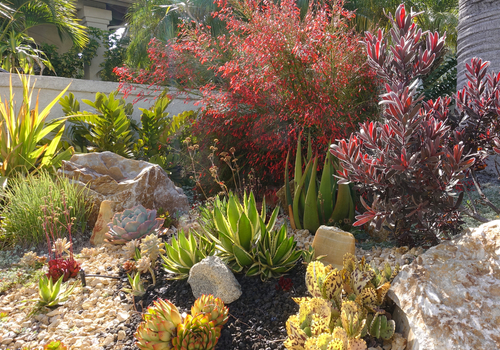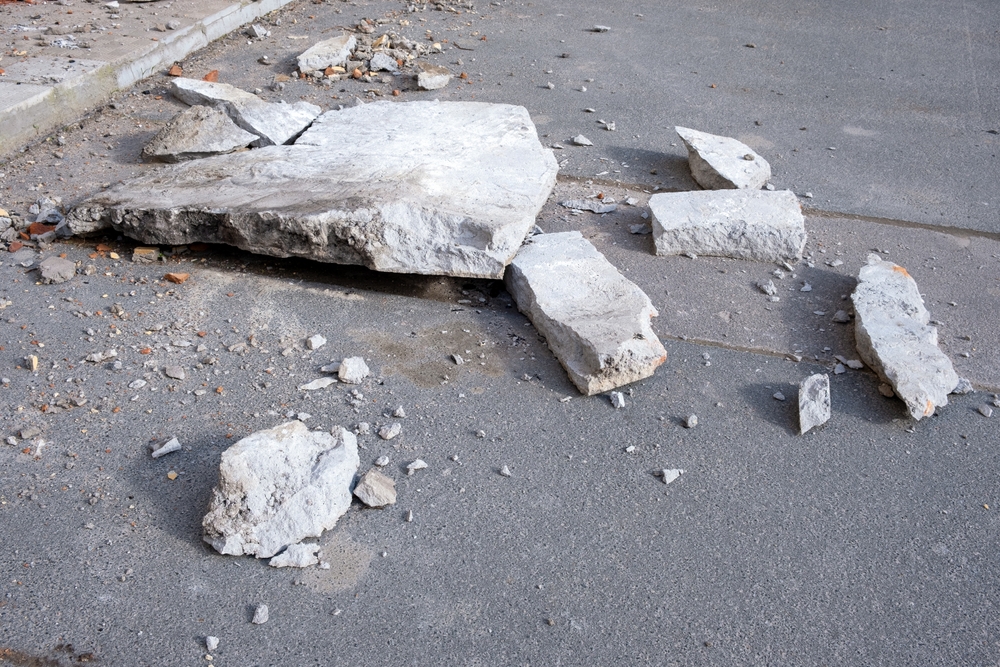March 28, 2024 - Benjamin Ehinger
How to Xeriscape Your Yard: A Guide to Eco-Friendly Landscaping
CALL NOW 844-762-8449
Xeriscaping is a landscaping philosophy that aims to maximize natural rainfall and minimize the need for supplemental water from irrigation. As water conservation becomes a critical consideration for gardeners and homeowners, xeriscaping offers a sustainable solution to creating a beautiful and eco-friendly yard. It leverages thoughtful design, appropriate plant selection, and efficient watering practices. By focusing on drought-tolerant plants and soil improvement, you can create a landscape that not only conserves water but also flourishes in your local climate.
When planning your xeriscape, it’s vital to understand your yard’s specific conditions—such as sunlight, soil type, and climate. This understanding guides the selection of plants that thrive in those conditions and the development of an appropriate irrigation system to support them. Enhancing the soil to maximize water retention and incorporating hardscapes, like rocks or pathways, into the design helps reduce water usage. Not only does xeriscaping reduce the environmental impact of your garden, but it can also lessen the time and resources required for maintenance.
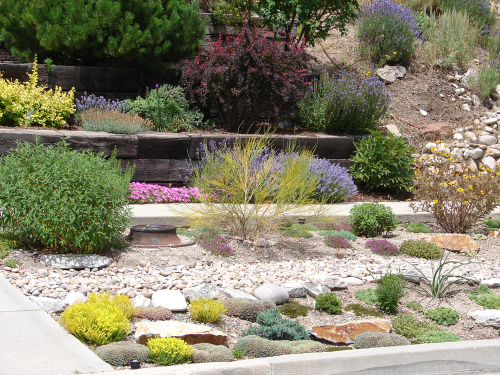 When xeriscaping your yard, the plant selection is vital for conserving water and ensuring your garden thrives. Choosing the right plants involves focusing on drought-tolerance and native species that are well-adapted to your local climate and soil conditions.
When xeriscaping your yard, the plant selection is vital for conserving water and ensuring your garden thrives. Choosing the right plants involves focusing on drought-tolerance and native species that are well-adapted to your local climate and soil conditions.
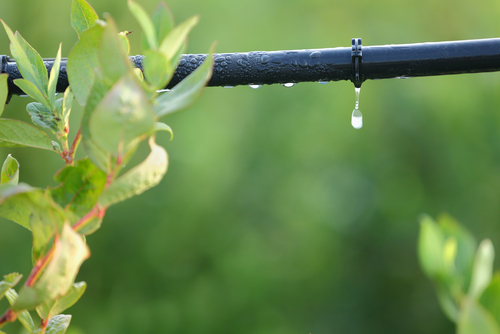 When xeriscaping your yard, choosing the right irrigation systems is crucial for water conservation and plant health. Drip irrigation systems and efficient watering practices ensure that water is delivered directly to the plants’ roots, reducing waste and promoting a sustainable garden.
When xeriscaping your yard, choosing the right irrigation systems is crucial for water conservation and plant health. Drip irrigation systems and efficient watering practices ensure that water is delivered directly to the plants’ roots, reducing waste and promoting a sustainable garden.
Key Takeaways
- Xeriscaping involves creating a water-efficient landscape by choosing drought-tolerant plants and improving soil conditions.
- A well-planned xeriscape offers ecological benefits through significant water conservation and an attractive, low-maintenance outdoor space.
- Consider climate, soil, and proper irrigation techniques to ensure a successful and resource-saving xeriscape.
Understanding Xeriscaping
Xeriscaping is a landscaping philosophy that reduces or eliminates the need for supplemental water from irrigation. It’s an effective way to create a low-maintenance and sustainable yard by carefully choosing plants and design strategies that conserve water.Benefits of Xeriscaping
- Water Conservation: By prioritizing drought-resistant native plants and efficient watering strategies, you can significantly reduce your yard’s water requirements.
- Reduction in Maintenance: Xeriscaping typically leads to a less demanding garden in terms of maintenance. Fewer grassy areas mean less mowing, and the plants used often require less care.
Xeriscape Principles
- Planning and Design: Map out your area with water conservation in mind, considering sun exposure, drainage patterns, and existing vegetation.
- Choice of Plants: Choose native or drought-tolerant plants that thrive in your local climate without needing much water.
- Efficient Irrigation: When necessary, employ an irrigation system that minimizes waste, such as drip irrigation positioned directly at the plants’ roots.
- Soil Improvement: Amending the soil can optimize moisture retention and provide nutrients for the plants. Those with clay soils need to enhance its structure to allow for better infiltration while sandy soils might need organic matter to help retain water.
- Mulching: Use mulch to reduce evaporation, suppress weeds, and maintain consistent soil temperature.
- Appropriate Maintenance: Even though xeriscape gardens are low maintenance, they do require some care, including pruning, weeding, and occasional watering.
Planning Your Xeriscape
Xeriscaping your yard starts with careful planning and evaluation of the current landscape. This approach not only saves water but also creates a low-maintenance and climate-appropriate garden space.Assessing Your Yard
Before embarking on your xeriscape project, you must understand your yard’s specific conditions. Begin by creating a map of your yard, marking out different zones such as areas that receive full sun, partial shade, or are mostly shaded. Add to this map existing structures, plants, and hardscaping. This will help you plan for appropriate plant placement and water-saving irrigation systems. Consider the climate and typical weather patterns in your area to determine the best drought-resistant plants for your landscape design.Designing Your Xeriscape
Effective landscape design is at the heart of xeriscaping. Aim to create a design that reduces water usage while maintaining aesthetic appeal. Use your yard map to designate areas for various types of plantings—those that require more water can be situated closer to natural water runoff areas or downspouts. Incorporate elements such as mulch and permeable paths to reduce water evaporation and run-off. Consider installing a drip irrigation system for efficient water use.Choosing a Xeriscape Style
Select a xeriscape style that complements your home’s architecture and fits into the local environment’s natural aesthetics. Decide whether you prefer a formal look with symmetrical patterns and structures, or a more natural and informal design mimicking nature’s randomness. Remember to choose plants that are well-suited for your climate zone, as they will thrive with minimal water once established. Research plants’ water requirements, growth habits, and their ability to coexist with other chosen plants to create a harmonious and sustainable xeriscape.Selecting Plants
 When xeriscaping your yard, the plant selection is vital for conserving water and ensuring your garden thrives. Choosing the right plants involves focusing on drought-tolerance and native species that are well-adapted to your local climate and soil conditions.
When xeriscaping your yard, the plant selection is vital for conserving water and ensuring your garden thrives. Choosing the right plants involves focusing on drought-tolerance and native species that are well-adapted to your local climate and soil conditions.
Drought-Tolerant Plants
Drought-tolerant plants are essential for a successful xeriscape. They require minimal watering to survive and thrive. These plants have typically adapted to arid environments and are a practical choice for conserving water.- Perennials: Select perennials like sedum or lavender that provide color and texture while requiring limited moisture.
- Grasses: Certain grasses such as buffalo grass or blue grama are drought-resistant and add a soft, natural look to your landscape.
- Trees and Shrubs: Trees like the desert willow or shrubs such as Russian sage are excellent for providing shade and structure with minimal water use.
Native Plants Selection
Incorporating native plants is a smart strategy in xeriscaping. These plants have evolved to thrive in your region’s environment, contributing to local ecology.- Advantages: Native plants improve biodiversity, require less fertilizer, and help maintain regional character.
- Examples: Include a mix of local wildflowers, grasses, and ferns that are acclimated to your climate.
- Succulents: Incorporating native succulents can provide year-round interest and are notably adept at water conservation.
Soil Preparation
Proper soil preparation is essential in xeriscaping to ensure that your plants are both water-efficient and healthy. Starting with the right foundation allows your plants to establish stronger root systems that can withstand drought conditions.Improving Soil Quality
To enhance your soil’s quality, it’s crucial to first assess its type. Sandy soils drain too quickly, while clay soils tend to retain moisture, making it harder for water to penetrate and roots to breathe. Incorporating organic matter such as compost can significantly improve the soil’s structure. Compost improves drainage in clay soils and increases water retention in sandy soils. You should aim for a balanced soil composition where water is retained long enough for plants to make use of it but not so long that the roots become waterlogged.- For sandy soils: Add rich, moisture-holding organic compost.
- For clay soils: Introduce compost that breaks apart the dense particles, enhancing porosity and aeration.
Mulching Techniques
Mulching is one of the best ways to conserve water in a xeriscape. By covering the soil with a protective layer of mulch, you can reduce evaporation, regulate soil temperature, and decrease weed growth. There are two main types of mulch: organic mulch and inorganic mulch.- Organic Mulch: Examples include wood chips, shredded bark, or homemade compost.
- Benefits: Improves soil fertility as it decomposes and helps retain moisture.
- Application: Spread a 2 to 4-inch layer around plants, being careful not to pile against stems or trunks.
- Inorganic Mulch: Comprises materials like pebbles, gravel, or stones.
- Benefits: Does not decompose and therefore requires less replenishment.
- Application: Layer evenly across your garden beds to deter weeds and provide a clean look.
Irrigation Systems
 When xeriscaping your yard, choosing the right irrigation systems is crucial for water conservation and plant health. Drip irrigation systems and efficient watering practices ensure that water is delivered directly to the plants’ roots, reducing waste and promoting a sustainable garden.
When xeriscaping your yard, choosing the right irrigation systems is crucial for water conservation and plant health. Drip irrigation systems and efficient watering practices ensure that water is delivered directly to the plants’ roots, reducing waste and promoting a sustainable garden.
Drip Irrigation Setup
To install a drip irrigation system in your xeriscaped yard, begin by mapping out your garden to identify the location of your plants and their water requirements. Your drip system should include a timer, pressure regulator, filter, and tubing to distribute water evenly. Here’s a simple setup process:- Position the mainline tubing: This is the pipeline that runs from your water source to your garden.
- Connect drippers and micro-sprayers: These attach to the mainline and are placed near the base of your plants.
- Install a timer: Set it to water early in the morning or late in the evening to minimize evaporation.
Efficient Watering Practices
Your xeriscape’s success heavily relies on efficient watering. Remember to:- Water deeply but infrequently to encourage deep root growth.
- Adjust the watering schedule based on the season and current weather conditions.
- Utilize a system with a rain sensor to halt watering during rainfall, saving water and preventing over-saturation of your plants.
Installing Hardscapes
Hardscaping is a key component of xeriscaping, providing structure and reducing water use. By strategically using rocks and gravel, you can create a yard that’s both aesthetically pleasing and environmentally sustainable.Incorporating Rocks and Gravel
In xeriscaping, rocks and gravel serve multiple purposes. They act as a ground cover to reduce evaporation, minimize weed growth, and add visual interest to your landscape. When selecting rocks and gravel, choose types that complement your home’s exterior and local environment. For example, if your home features warm tones, you might opt for buff-colored gravel.- Installation Steps:
- Define the areas for gravel and rocks using string or chalk lines.
- Remove any existing vegetation and apply a layer of landscaping fabric to prevent weeds.
- Lay down your choice of gravel at a depth of about 2-3 inches for optimal coverage.
- Strategically place larger rocks to create natural patterns and focal points.
Building a Rock Garden
Creating a rock garden leverages natural beauty with practical water conservation. Begin by choosing a location that receives plenty of sunlight, as rock gardens typically host drought-resistant plants.- Building Steps:
- Plan the design by arranging the largest rocks first to serve as the foundation.
- Bury a portion of each rock to create an appearance of it naturally rising from the ground.
- Fill in with smaller stones and drought-tolerant plants, such as succulents or native perennials.
Landscaping Techniques
In xeriscaping, effective landscaping techniques focus on conserving water while ensuring your yard remains aesthetically pleasing. These techniques require strategic planning around the architecture of your landscape to include layers and manage runoff effectively.Creating Layers
Layers in xeriscape landscaping are essential for achieving a visually appealing and water-efficient yard. Think of your landscape in terms of height, texture, and color. Begin by placing taller, drought-resistant trees and shrubs at the back and gradually step down to medium-sized plants, followed by ground covers and low-growing succulents at the front. This approach not only creates an interesting visual effect but also supports a diverse ecosystem. Moreover, layers help in retaining soil moisture and reducing evaporation.- Tallest Layer: Shade trees like oaks or pines; deep-rooted to access water and provide shade.
- Mid Layer: Shrubs and bushes; provide color and further reduce ground heat.
- Ground Layer: Groundcovers and low-water perennials; protect soil and minimize weed growth.
Controlling Runoff
Controlling runoff is crucial in a xeriscape to prevent water loss and erosion. By shaping the land, such as creating swales or terraces, you can direct rainfall to plants that need it most. Utilize permeable materials for walkways and patios to allow water to seep into the ground rather than run off. Techniques like mulching exposed soil help to slow runoff, encourages infiltration, and decreases erosion. Be mindful of the materials you choose:- Permeable Pavers: Allow rainwater to filter through to the soil.
- Mulches: Wood chips or gravel slow down water movement and reduce evaporation.
- Swales: Shallow ditches that catch runoff and guide it to where it’s needed.
Maintaining Your Xeriscape
After successfully xeriscaping your yard, consistent maintenance ensures your landscape remains healthy and aesthetically pleasing while still conserving water. Proper practices in pruning, weeding, and seasonal care minimize effort and maximize the beauty of your xeriscape.Pruning and Weeding
Pruning isn’t just about keeping plants tidy. By selectively removing branches, you encourage better growth and plant health. Aim to prune during the plant’s dormant season, removing any dead or overgrown branches to promote air circulation. Weeding, on the other hand, is arguably the most ongoing task in your xeriscape garden. Regular weeding keeps competing plants at bay. Dedicate time either weekly or bi-weekly to remove weeds before they establish, as xeriscaped areas often have less dense vegetation, making it easier for weeds to spread.Seasonal Care
With each season, your xeriscape’s needs change. In spring and fall, fertilizing may be necessary for some plants. Choose a low-phosphate, slow-release fertilizer to minimize runoff and encourage root health. Mulching helps maintain soil moisture levels and temperature, and is essential for protecting plant roots from temperature extremes. An added layer of organic mulch can reduce the need for supplemental watering and help control weed growth. Refresh mulch layers as needed, typically once or twice a year, to maintain about a 2-3 inch depth. Remember, while xeriscapes are “low-maintenance”, they are not “no-maintenance”. Your regular attention prevents potential issues and keeps your yard thriving with minimal water usage.Saving Resources
In xeriscaping, your goal is to maximize your environmental and economic benefit by conserving water and maintaining a sustainable garden. This practice significantly reduces water consumption, ultimately conserving natural resources.Conserving Water
To dramatically cut down on your water consumption, choose plants with low water requirements and group them according to their water needs to create a more efficient watering regime. Additionally, incorporating mulch and high-quality soil can reduce evaporation and the need for frequent watering. Techniques such as drip irrigation can target specific plantings, ensuring that water is delivered directly to the roots where it’s needed most.Sustainable Gardening
Sustainable gardening is inherently tied to the efficient use of resources. By selecting native plants adapted to your region, your garden will thrive with minimal interference. These plants tend to be better suited for the local climate and soil conditions, which leads to a decrease in supplementary water and fertilizers. Furthermore, creating a garden that encourages local wildlife adds to the biological sustainability of your xeriscaping efforts.Xeriscaping in Different Climates
When xeriscaping, understanding your climate is crucial for maximizing water conservation and ensuring a thriving landscape. The strategies you employ will differ significantly based on whether you’re in an arid zone or handling variable rainfall patterns.Adapting to Arid Zones
In arid climates, water retention is the key. You’ll want to select drought-tolerant plants that require minimal irrigation, focusing on species that are native to your area since they’ve adapted to thrive in dry conditions. Improve your soil’s water-holding capacity by incorporating organic matter, which can help support your plants during periods of limited rainfall.- Soil Additives for Arid Zones:
- Compost: Enhances moisture retention
- Coarse Sand: Improves drainage and aeration
- Peat Moss: Increases water retention without compaction
Considering Rainfall Patterns
For areas with variable rainfall, it’s important to design your landscape to make the most of the water when it comes. Creating rain gardens in low-lying areas helps capture rainfall, allowing it to soak into the ground. Use contouring and terracing to direct water flow to where it’s needed most, and consider installing a rainwater harvesting system for supplemental irrigation during dry spells. Additionally, it’s wise to observe the natural water runoff patterns in your yard to identify spots that either hold water too long or dry out too quickly. Adjust your planting strategy accordingly:- Plant Zoning Based on Rainfall:
- High ground: Drought-tolerant plants that can handle dry spells
- Depressions: Water-loving plants that thrive with extra moisture
Frequently Asked Questions
Navigating the specifics of xeriscaping can be challenging for beginners and experts alike. These answers will equip you with the precise knowledge needed to create a water-efficient and appealing yard.What are the best plant choices for a xeriscaped garden in different climates?
In colder climates, opt for native perennials like Purple Coneflower or Russian Sage. Warmer regions benefit from desert natives such as Lantana or Agave. For more information on drought-tolerant plants, visit Angi’s article on xeriscaping.What are the essential steps for a beginner to xeriscape their yard?
Start by assessing your space and soil and then create a plan. Use native plants and install irrigation systems like drip lines that conserve water. For more detailed guidance, check this beginner’s guide to xeriscaping.Can you provide tips for DIY xeriscaping in a front yard?
Focus on curb appeal with a variety of plants at different heights and stone paths or mulch to reduce water usage and maintenance. Group plants according to water needs to maximize efficiency.What is the process for preparing soil in a yard that will be xeriscaped?
Improve drainage by blending organic material to avoid compaction. For clay soils, amend with grit for better water penetration. Sandy soils benefit from organic matter to increase water retention. Learn about soil preparation from Better Homes & Gardens.Is it necessary to remove all existing grass before beginning a xeriscaping project?
It’s not always necessary to remove all grass, but highly water-consuming species should be replaced with drought-tolerant groundcovers or other low-water alternatives.What are some potential drawbacks of xeriscaping that homeowners should consider?
While xeriscaping is low-maintenance and water-efficient, initial costs can be high, and it may not align with certain aesthetic preferences. Also, be aware of local regulations that may restrict certain landscaping choices. For a nuanced look at these considerations, see Real Homes’ advice on xeriscaping.RECENT BLOGS
Our Reviews
Glenda Lanier Prowell
1721758635
I have ordered an 11 yard dumpster to be delivered to my house.Lonier was extremely helpful and answered all my questions. The rate was very reasonable.
Cedric Smikle
1721660395
Amber was extremely professional and courteous. She answered all of my questions and even some that I didn’t know I needed to ask.
Cait Kaider
1721243051
I highly recommend Waste Removal USA for their responsiveness and how the staff work hard to provide exceptional customer service. They have done well by us and our clients. Thank you!
Easom Family
1721223306
Louiner Pierre-Louis Is awesome! Did a great job. Will definitely be using this same company for all my dumpster needs because of his awesome customer service! Thank you!!!
tabitha Vazquez
1720539988
Wonderful and fast customer service!
LATEST BLOGS
